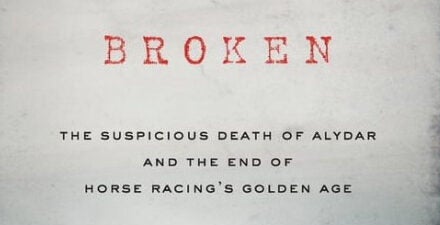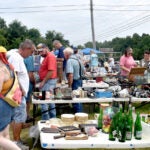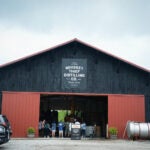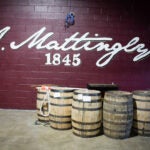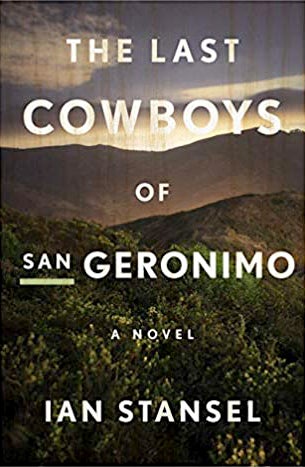
“The Last Cowboys of San Geronimo” by Ian Stansel
Ian Stansel’s debut novel, “The Last Cowboys of San Geronimo,” literally starts with a bang. Frank Van Loy lies dead in the dirt, shot through the heart. His killer? None other than his younger brother, Silas.
Instead of going home or turning himself in, Silas sets out on horseback across Northern California. He’s not exactly sure where he’s going, but he knows they’ll be looking for him. And, they are. Not only is he pursued by the police, but also by Frank’s wife, Lena.
Also on horseback, Lena intends to hunt her brother-in-law down and take her revenge. Against Lena’s better judgment, her stable hand, Rain, goes along for the ride.
The narrative shifts back and forth in time, detailing the Van Loy brothers’ troubled relationship and a sibling rivalry that only intensifies as the years pass. When their father’s health declines due to lung cancer, the brothers take over the family’s Marin County stable. Frank argues that there is no longer money in “cowboying” and suggests they transition the business from Western to the more popular English style riding.
Frank may know business, but Silas knows the animals, and this doesn’t set well with him from the start. The stable begins to see great success, and the brothers are able to expand, but this doesn’t stop their often-violent quarrels.
The breaking point arrives when Frank sells Silas’ favorite horse without his knowledge. After a barroom brawl that lands both brothers in jail, Silas leaves the family business behind to work for a neighboring stable, eventually purchasing it for his own. This initiates a years-long feud, and what starts as competition between the two businesses quickly turns malicious.
Stansel’s ability to weave the brothers’ backstory in with the present-day chase provides readers with the intimate details needed to understand each character’s motivation as the plot unfolds. Although the brothers never had a textbook healthy relationship, what would drive Silas to end his brother’s life? Moreover, what fate awaits Silas at the end of this journey?
A contemporary western that centers on familial drama, this would be a great read for fans of the popular television series “Yellowstone.”
Ian Stansel serves as associate professor and director of creative writing at the University of Louisville. “The Last Cowboys of San Geronimo” was named one of Amazon’s Top 100 Books of the Year in 2017.
— Review by Diane Dehoney, Paul Sawyier Public Library
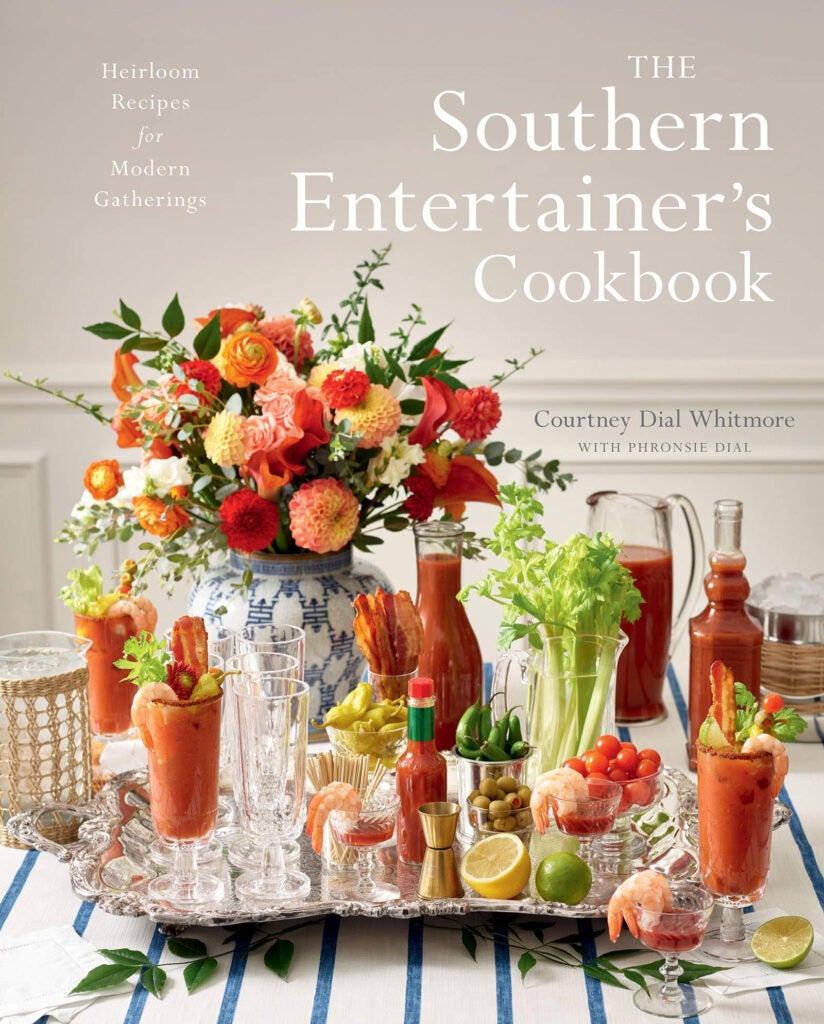
“Southern Entertainer’s Cookbook” by Courtney Dial Whitmore
There’s nothing like southern hospitality, as entertaining is a way of life here in the South, especially during Derby. There is always a reason to have friends and family over, and food is at the center of the celebration. In this book, Whitmore, a party planning expert, showcases several recipes straight from her mother’s personal recipe binder. In addition, she also offers her readers some new favorites alongside entertaining tips like party portions.
This book has gorgeous full-page photos, easy to follow directions, party planning tips and menus. The recipes in the book are timeless and will be recognized by many, such as Texas sheet cake, lemon squares, spoon bread and buttermilk fried chicken. Several of the dishes are presented as “bite-size,” making it easier to serve a larger group of partygoers.
With nearly 100 recipes packed with regional flavor, if you are looking for options to please a hungry crowd, you will find plenty of ways to do that in this book.
— Review by Paul Sawyier Public Library staff
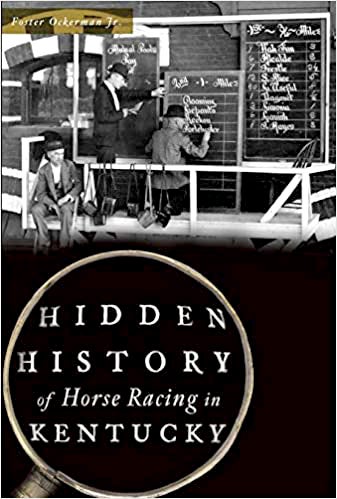
“Hidden History of Horse Racing in Kentucky” by Foster Ockerman Jr.
Horse racing has been a part of Kentucky’s history since the 18th century. In 2012, the Kentucky Equine Survey conducted by the University of Kentucky stated that the industry generates about $3 billion and created more than 40,000 jobs. There were about 54,000 thoroughbred horses, 42,000 quarter horses, 36,000 Tennessee walking horses, 14,000 saddlebreds and 12,500 Kentucky mountain horse breeds as well as ponies, draft horses, Arabians and other breeds mostly in the central Bluegrass Region. In this book, Ockerman discusses the many unknown facts of the Kentucky sport.
Ockerman documents that local racetracks once were almost as popular as high school football fields, with horse racing occurring often on the main streets of early towns. It could be that the first race started with a wager, or a flight from danger.
Over the years, the basic concepts of how to train, break and ride a horse were perfected slowly. Ockerman writes that while Romans raced chariots, the Parthians of ancient Iran, perfected the skill of shooting an arrow, their “parting shot” at full gallop while turned around on the back of the horse without stirrups.
The verb, jockey, is to maneuver by adroit means, which is likely how the racing rider became known. Jockey Clubs were formed to govern racing in the colonies. In 1826, the Lexington Jockey Club adopted a rule for all riders to wear silk jackets and caps. By 1893, designs for specific farms were adopted and standardized. King George IV in the 1820s had silks that were purple and scarlet with gold embroidery. Queen Elizabeth II still uses these silks. A more recent owner, who was also a New York Knicks fan, uses a silk with a basketball in the center of the back.
One of the more interesting stories in this history is how Henry Clay innovated the industry. He and four other men bought Buzzard for the “extraordinary price” of $5,500 in 1806. The general practice at that time was for the purchaser of a stallion to breed only with his own mares. However, Clay and his partners advertised Buzzard to stand at stud for a $45 fee.
Many Kentuckians will attend the Kentucky Derby or host Derby events. Ockerman’s “Hidden History” could add many colorful stories and entertainment for guests at these events.
— Review by Lizz Taylor, Poor Richard’s Books
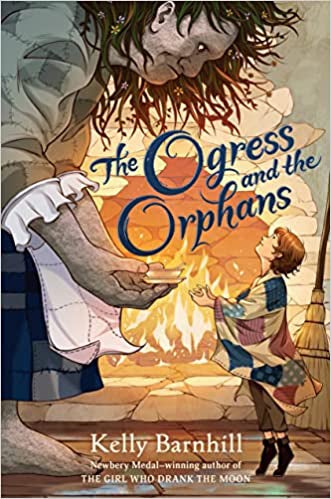
“The Ogress and the Orphans” by Kelly Barnhill
Kelly Barnhill was the 2017 Newberry Medal winning author of “The Girl Who Drank the Moon.” Now, Barnhill has used her fairytale skills to tell the story of a lovely town that has fallen on hard times.
Stone-in-the-Glen has not been the same since the mysterious fire burnt down the library. Then, there was the flood and other disasters that hit the school and the park. The town folk who used to gather in those places, now became suspicious of each other. They put their faith in the town’s mayor, quite a showy, impressive character who was said to have slain a dragon. People are not certain about the dragon, but none has appeared since the mayor arrived.
In the past, the taxes collected would fund the upkeep and maintenance of the orphanage. However, Matron has not received any funds in more than a year and the orphans are running low on supplies. The children are hungry and the town doesn’t seem to be aware of their shabby clothes or bare feet. Matron wonders why “kindly people don’t always take a stand for what is right.”
Then the Ogress builds her home at the edge of the town. She sees the needs of the town folk and tries to provide extra comfort to her neighbors by supplying them with delicious vegetables from her garden, baked goods and preserves from her kitchen with artistic notes of encouragement. She delivers the gifts anonymously under the cover of darkness.
When one of the orphans goes missing, the mayor suggests that it is the work of the Ogress. He encourages the town folk to confront the Ogress and drive her away, even if by illegal means.
This is a simple tale of good vs. evil, but it is even more a commentary on the generosity of a community and how kindness can change the perspective of neighbors. Though the theme is basic, there are also subplots on the nature of time, the importance of community care and what makes a good neighbor. Barnhill uses sophisticated language to convey her message, and children will love the “asides” that she speaks to the reader.
— Review by Lizz Taylor, Poor Richard’s Books




